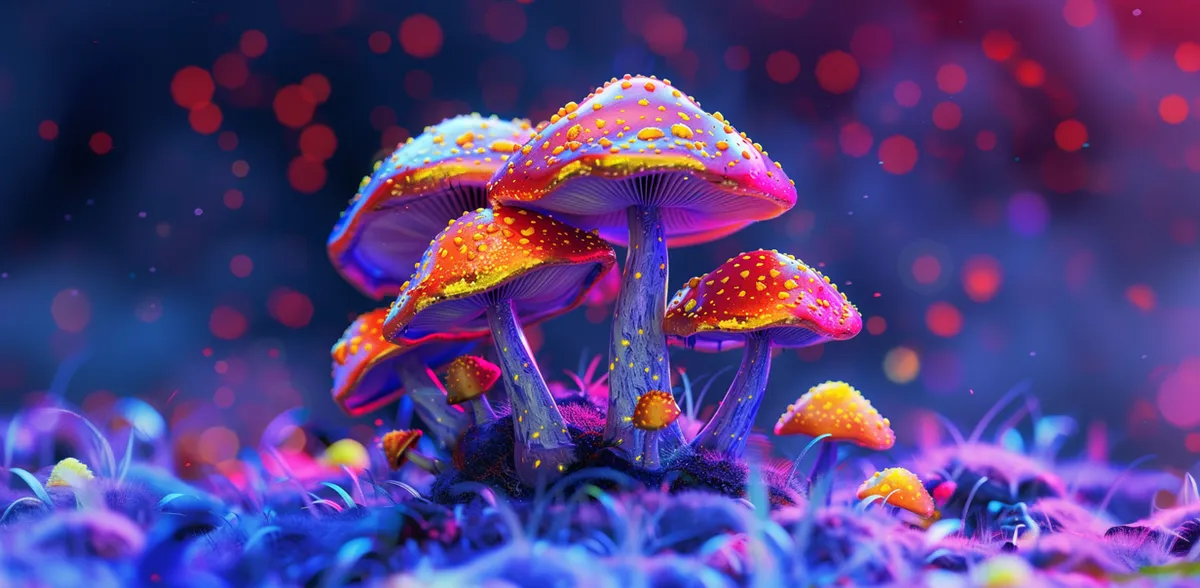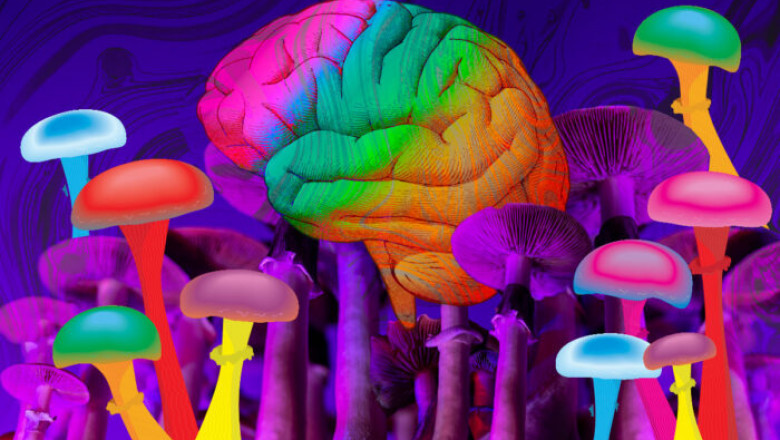views
A Beginner’s Guide to Psychedelic Substances and Their Effects
Psychedelic substances have intrigued humanity for centuries, offering the promise of profound insight, spiritual awakening, and altered states of consciousness. In recent years, these substances have gained renewed attention, not just in counterculture movements but also in scientific and therapeutic circles. From indigenous ceremonies to modern clinical trials, the use of psychedelic substances has evolved considerably. This guide is designed to help beginners understand what psychedelics are, how they work, what effects they can produce, and what risks and considerations are involved in their use.

What Are Psychedelic Substances?
Psychedelic substances, also known as hallucinogens, are a class of psychoactive compounds that alter perception, mood, and various cognitive processes. These substances affect the brain's serotonin receptors, particularly the 5-HT2A receptor, leading to changes in thought patterns, sensory perception, and emotional state.
Some of the most well-known psychedelic substances include:
-
LSD (Lysergic acid diethylamide)
-
Psilocybin (found in magic mushrooms)
-
DMT (Dimethyltryptamine)
-
Mescaline (found in peyote and San Pedro cacti)
-
Ayahuasca (a DMT-containing brew used traditionally in the Amazon)
-
MDMA (Ecstasy) – although often classified differently, it's sometimes included for its empathogenic properties.
These substances can be synthetic or naturally occurring and are used in various contexts—from recreational and spiritual to therapeutic and research-based.
A Brief History of Psychedelic Use
The use of psychedelic substances dates back thousands of years. Indigenous cultures across the globe have used plants and fungi for religious ceremonies and healing rituals. For example:
-
Ayahuasca has been used for centuries by Amazonian tribes for spiritual and medicinal purposes.
-
Peyote and San Pedro have long been central to Native American religious ceremonies.
-
Psilocybin mushrooms were used in ancient Mesoamerican cultures, including the Aztecs, who referred to them as "teonanácatl," meaning "flesh of the gods."
In the 20th century, psychedelics gained popularity in the West, particularly during the 1960s counterculture movement. However, due to political and social backlash, they were largely criminalized by the 1970s. Recently, a psychedelic renaissance has emerged, with growing scientific interest in their potential therapeutic benefits.

How Psychedelics Work in the Brain
Psychedelics primarily affect the brain’s serotonin system, especially the 5-HT2A receptor. When these substances bind to these receptors, they induce a state of increased brain connectivity, reduced ego boundaries, and altered sensory perception. This can lead to profound experiences, including:
-
Synesthesia – blending of senses (e.g., seeing sounds or tasting colors)
-
Ego dissolution – loss of a sense of individual self, often described as merging with the universe
-
Visual hallucinations – seeing geometric patterns, colors, or even entities
-
Time distortion – minutes may feel like hours and vice versa
-
Emotional release – accessing and processing repressed emotions
Functional MRI studies show that psychedelics reduce activity in the brain’s default mode network (DMN), which is associated with self-referential thinking and the “ego.” Lower activity in the DMN may explain the ego-dissolving effects of these substances.
Common Psychedelics and Their Effects
1. LSD (Acid)
-
Dosage: Typically 50–150 micrograms
-
Duration: 8–12 hours
-
Effects: Intense visual hallucinations, time distortion, heightened emotions, ego dissolution
-
Risks: Anxiety, paranoia, “bad trips,” and potential for long-lasting psychological effects
2. Psilocybin (Magic Mushrooms)
-
Dosage: 1–5 grams of dried mushrooms
-
Duration: 4–6 hours
-
Effects: Spiritual experiences, emotional breakthroughs, visual distortions
-
Risks: Nausea, anxiety, possible triggering of latent mental illness
3. DMT (The Spirit Molecule)
-
Dosage: 20–50 mg when smoked or vaporized
-
Duration: 10–30 minutes (can last longer in ayahuasca)
-
Effects: Rapid onset, intense visual and auditory hallucinations, encounters with "entities"
-
Risks: Overwhelming experiences, confusion, physical discomfort
4. Ayahuasca
-
Dosage: Varies, usually taken in ceremonial settings
-
Duration: 4–6 hours
-
Effects: Deep introspection, emotional purging (often through vomiting), spiritual insights
-
Risks: Physical side effects (nausea, diarrhea), potential drug interactions
5. Mescaline (Peyote, San Pedro)
-
Dosage: 200–500 mg
-
Duration: 10–12 hours
-
Effects: Visual hallucinations, emotional depth, spiritual connection
-
Risks: Nausea, vomiting, sensitivity to light and sound
6. MDMA (Ecstasy)
-
Dosage: 75–125 mg
-
Duration: 3–6 hours
-
Effects: Enhanced empathy, emotional openness, euphoria
-
Risks: Neurotoxicity with frequent use, dehydration, overheating, serotonin syndrome
Therapeutic Potential of Psychedelics
In recent years, psychedelics have shown promise in treating a variety of mental health conditions, including:
-
Depression – especially treatment-resistant depression
-
PTSD – MDMA-assisted therapy has shown remarkable success in clinical trials
-
Anxiety – particularly end-of-life anxiety in terminal patients
-
Addiction – psilocybin and ibogaine have shown efficacy in treating substance abuse
Johns Hopkins, MAPS (Multidisciplinary Association for Psychedelic Studies), and other institutions have led clinical trials that demonstrate the therapeutic value of psychedelics when used in controlled, supportive environments.
Risks and Safety Considerations
While many people report positive and transformative experiences, psychedelics are not without risks. Key safety considerations include:
-
Mental health history: People with a history of psychosis or schizophrenia are at increased risk of adverse effects.
-
Set and Setting: Your mindset (“set”) and physical environment (“setting”) are crucial for determining the outcome of a trip.
-
Purity and dosage: Street-bought substances can be adulterated. Always test your substances with reagent kits if not in a clinical setting.
-
Integration: Post-experience reflection and integration can help process insights and avoid confusion or emotional distress.
Important: Psychedelics are not for everyone. What may be a spiritual journey for one person can be destabilizing for another.
Legal Status Around the World
The legality of psychedelic substances varies significantly from country to country:
-
United States: Most psychedelics are Schedule I substances federally, but cities like Denver, Oakland, and Portland have decriminalized psilocybin or other entheogens.
-
Canada: Psilocybin is illegal, though exemptions are being granted for therapeutic use.
-
Brazil and Peru: Ayahuasca is legal in religious contexts.
-
The Netherlands: Psilocybin truffles are legal and sold openly.
-
Portugal: All drugs are decriminalized for personal use.
It's essential to research the laws in your jurisdiction before considering the use of any psychedelic substance.
Harm Reduction Tips for Beginners
-
Start low and go slow: Begin with a lower dose to understand your sensitivity.
-
Choose a safe, comfortable environment: Avoid chaotic or unpredictable settings.
-
Have a trusted trip sitter: Ideally someone sober and experienced.
-
Avoid mixing substances: Especially with alcohol or prescription drugs.
-
Stay hydrated: But don’t overdo it, especially with MDMA.
-
Reflect and integrate: Journaling or talking with a therapist can help make sense of your experience.
Where to Explore Psychedelic Products Safely
For those curious about exploring psychedelic substances in a safe, discreet, and legally compliant manner, Xpress Apotheke offers a trusted platform to begin your journey. Specializing in high-quality wellness and psychoactive products, Xpress Apotheke provides access to a range of carefully sourced items with customer privacy and satisfaction at the forefront. Whether you are new to psychedelics or seeking reliable alternatives for therapeutic exploration, their user-friendly website and commitment to product transparency make them a valuable resource in the growing field of psychedelic wellness.
Final Thoughts
Psychedelic substances hold incredible potential for healing, insight, and transformation—but they should be approached with respect, caution, and knowledge. Whether you’re curious about their therapeutic potential or exploring personal growth, it’s important to prioritize safety, legality, and proper preparation.
As scientific research continues to validate the benefits of these ancient medicines, we are entering a new era of understanding and acceptance. For beginners, the key is to remain informed, intentional, and mindful throughout the journey.














Comments
0 comment